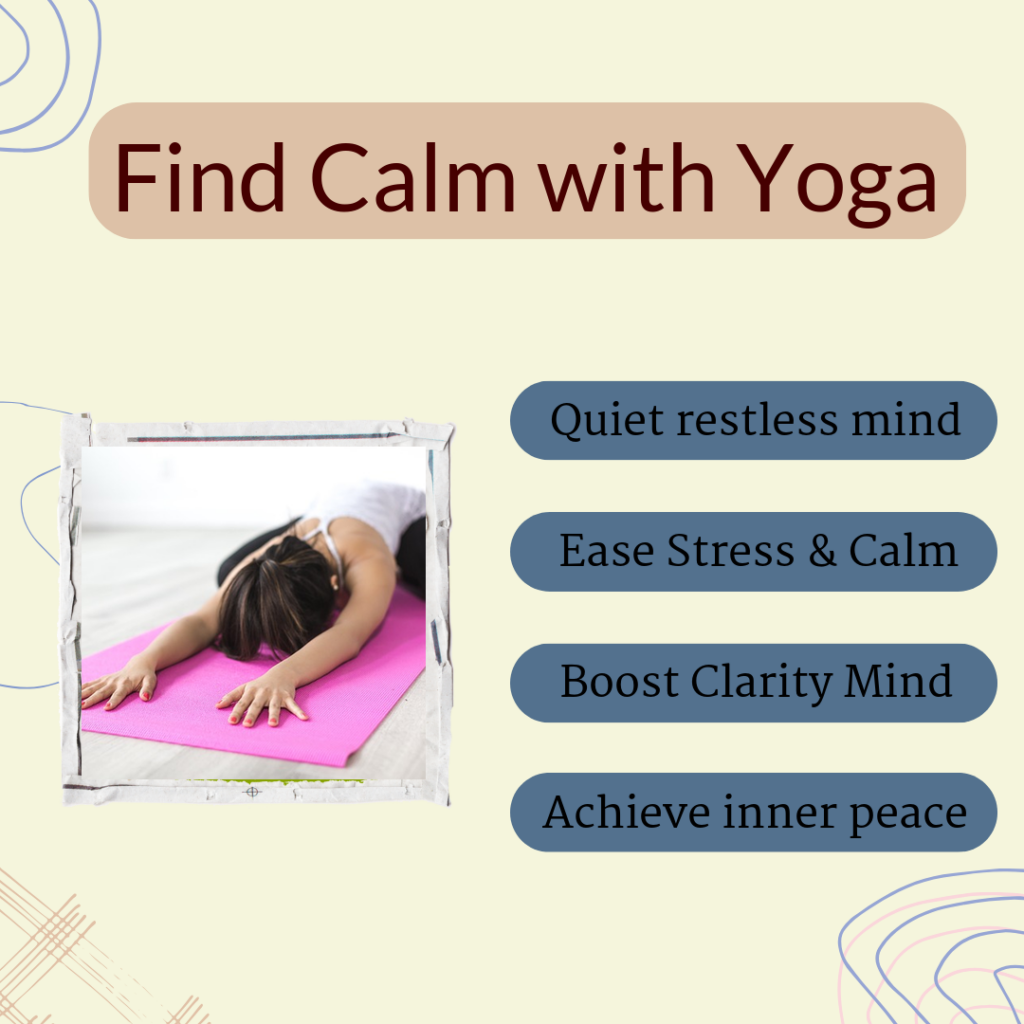Feeling overwhelmed or restless? You’re not alone. Our minds often jump from thought to thought, much like a monkey swinging from tree to tree. Enter yoga, a practice that offers yoga for mind relaxation, helping calm our busy minds and finding focus.
I. Introduction: The Chaotic Symphony of the Monkey Mind
“Monkey mind” is a term stemming from Buddhist traditions, describing a restless, unsettled state of mind. It feels like your thoughts are in chaos, taking focus away from what truly matters. This mental hustle can leave you stressed and anxious. Fortunately, yoga can help. When harnessed effectively, yoga for mind relaxation allows you to find peace and quiet the noise, leading to a calmer, more focused you.

II. Understanding the Monkey Mind (Chitta Vritti)
In Hindu philosophy, the term “Chitta Vritti” refers to the whirlings of the mind. It’s a concept symbolizing those mental waves that continuously pull you in different directions. Symptoms of this include constant worry, inability to concentrate, and overthinking. Those who’ve dealt with it say it feels imprisoning, like being stuck in a loop of worries and distractions. By understanding this, you can better appreciate the role of yoga for calm mind and focus in providing relief. Testimonials often highlight how once they embraced practices like calm mind yoga, they’ve been able to alleviate symptoms and regain control.
III. The Yoga-Mind Connection
Yoga isn’t just for the body; it’s powerful for the mind too. Through various practices, it promotes mental relaxation, reduces stress, and improves emotional well-being. Research continues to show that incorporating mind calming yoga offers benefits like reduced anxiety and better sleep. Many have shared stories of transformation, where regular practice helped shift their mental state from chaos to serenity. Whether it’s the meditative aspect or the breathing techniques, yoga for keeping mind calm acts as a balm for many.
IV. Breathing Techniques (Pranayama) for a Calm Mind
Breath control, or Pranayama, is a core part of yoga for mental relaxation. Consider these simple techniques:
- Deep Belly Breathing: Focus on expanding your abdomen as you inhale and contract it as you exhale. This slows the heart rate and calms the body and mind.
- Alternate Nostril Breathing (Nadi Shodhana): Close one nostril and inhale, then switch and exhale. This balances the brain’s hemispheres, promoting a clearer, focused state of mind.
- Ocean Breath (Ujjayi): A soft, controlled breath through the nose, creating a whispering sound. It’s known for enhancing concentration and bringing calmness.
Living in bustling cities like those in India, practicing these techniques offers immense relief by creating space for stillness amidst the noise. For people looking to improve mind relax yoga in Tamil, these methods offer accessible starting points.
V. Simple Yoga Poses for Relaxation
Incorporating specific poses can enhance yoga to calm your mind:
- Child’s Pose (Balasana): This posture helps reduce stress and fatigue.
- Cat-Cow Pose (Marjaryasana-Bitilasana): Flowing between these poses links breath and body for a harmonious state.
- Legs-Up-the-Wall Pose (Viparita Karani): Great for relaxation and relieving insomnia.
- Corpse Pose (Savasana): The ultimate resting position, helping ground and center the mind.
Each of these poses not only helps calm the mind but also offers body relaxation benefits, making yoga for relaxing mind and body a comprehensive approach.
VI. Meditation Techniques for Inner Peace
Meditation further contributes to mind relief yoga:
- Body Scan Meditation: Focuses on awareness of different body parts, enhancing full-body relaxation.
- Mindfulness Meditation: Perfect for addressing anxiety by keeping you present.
- Loving-Kindness Meditation: Encourages self-compassion and healing through positive affirmations.
Practitioners often report a profound sense of peace and clarity, an oasis amidst life’s tumult.
VII. Creating a Seamless Routine for Mind Relaxation
Embedding yoga for mind relaxation into daily life doesn’t have to be complicated. Begin with a simple 15-minute routine. Consistency is key; the benefits grow over time. Try mixing poses and breathing techniques periodically to keep your practice engaging and effective.
VIII. Complementary Techniques for Calming the Monkey Mind
Enhance your routine with other calming methods:
- Journaling: Great for emotional release.
- Nature Walks: Help ground and reconnect with your surroundings.
- Digital Detox: Step away from screens to refresh and reset.
Each practice supports your journey in finding a tranquil mind.
IX. Recognizing When to Seek Professional Help
Sometimes, professional help is necessary, and that’s okay. Signs you need added support include persistent feelings of overwhelm, inability to function daily, and insomnia. Yoga therapy can provide targeted healing, and working with mental health professionals often complements your practice. It’s important to recognize when to ask for help and where to find it.
X. Conclusion: Embracing a Tranquil State of Mind
Remember, finding peace isn’t a race. Small, consistent steps with yoga for mind relaxation can make all the difference. Start today and notice how a little tranquility transforms your life.
By understanding and integrating these practices, you’re on the path to achieving a calm, focused, and more serene life.


